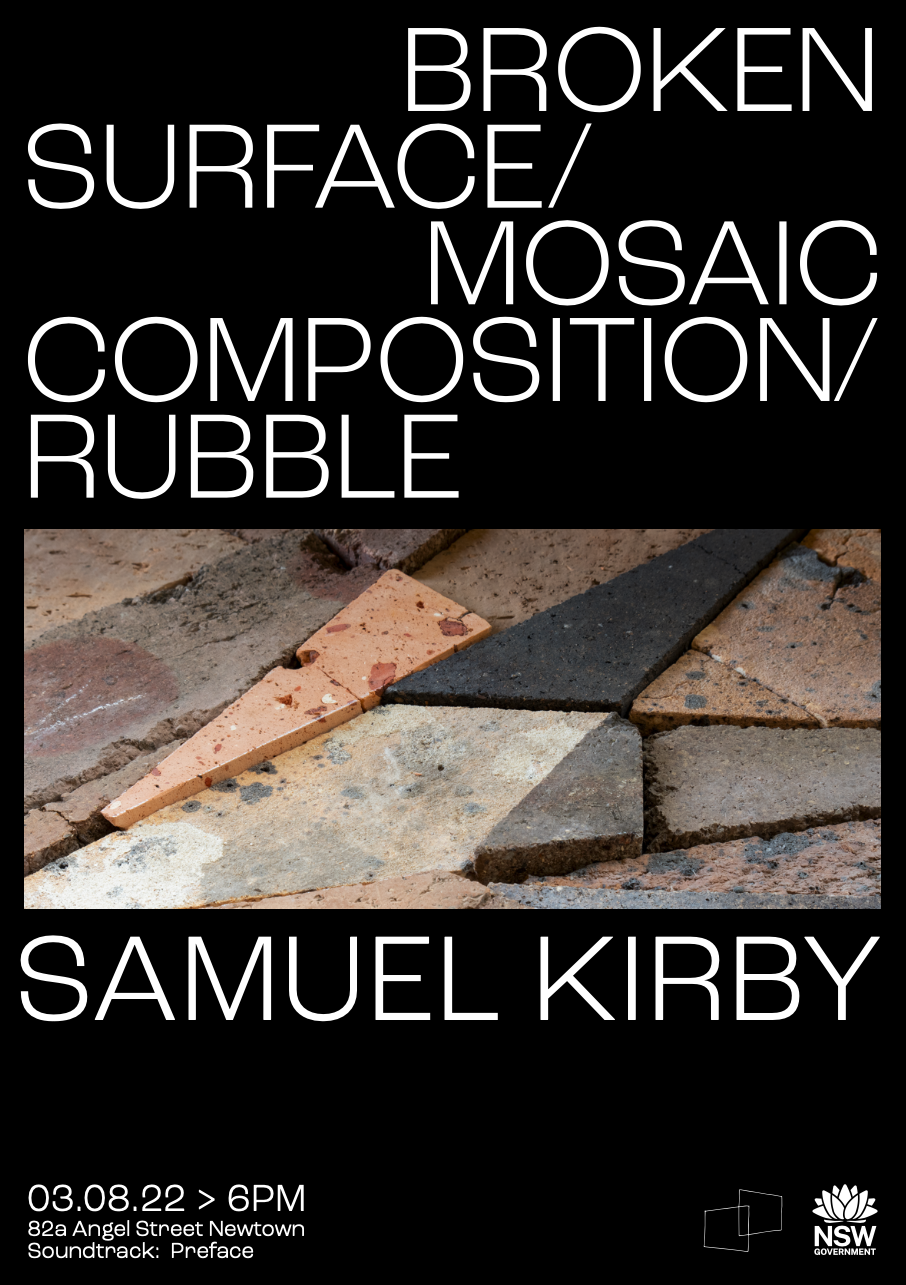Samuel Kirby
︎︎︎ Instagram
Broken Surface/ Mosaic Composition/ Rubble
August 2022
The following projects was supported by Create NSW





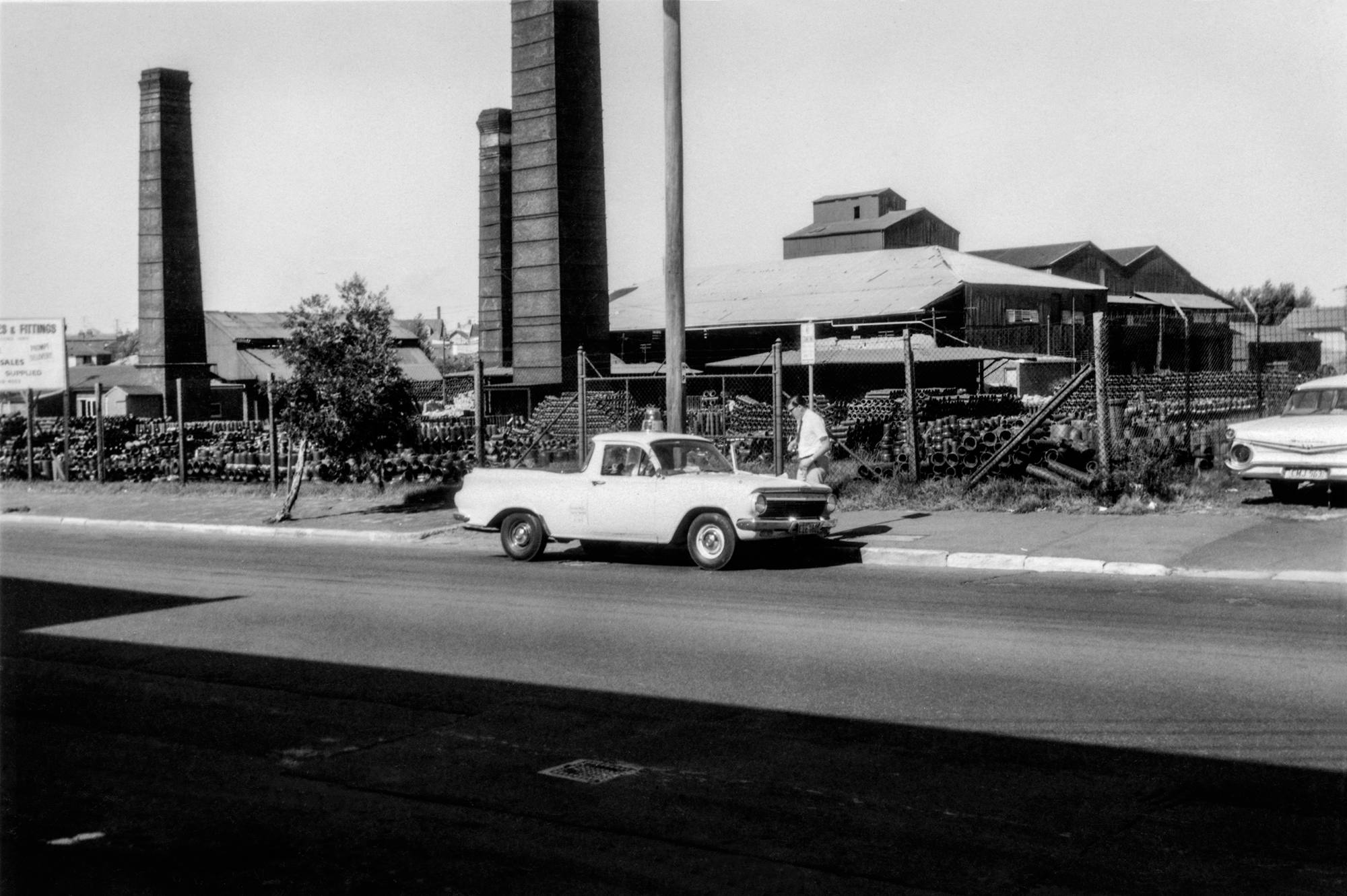




Manhole covers conceal access points to subterranean infrastructure and mark
historical sites of municipal excavation.
These covers, made from iron, steel, concrete or plastic, feature information and
patterns cast into their surface. Across the scope of patterns cast today, a
frequently occurring motif is one visually evocative of a broken surface, mosaic
composition, or rubble. An example of this can be seen on the manhole covers
located in front of the gallery windows facing Angel St.
I am interested in the narrative potential of manhole covers featuring this motif to
communicate the impact of urban development on the natural substrate below.
Much of the Inner West is built upon clay-rich soil. Ceramic products made from
this natural resource have played a significant role in the economic and physical
development of European society and its built environments since the arrival of the
first fleet in 1788. Industrial-scale operations, such as that which occurred at
Sydney Park, transformed local clay bodies, excavated from open pitts, into bricks,
tiles, and drainage/sewer pipes within furnaces built on-site.
Within urban environments, underlying clay soils continue to be excavated and
modified: facilitating a range of subterranean infrastructural projects. At these
sites, an access pit is often maintained with a manhole cover on top.
A narrative of modifying the subterranean landscape is suggested by the presence
of manhole covers. This interpretation is further enhanced where the
aforementioned motif is cast onto their surface.
Broken Surface/ Mosaic Composition/ Rubble is an exercise in further developing
this motif in response to the three forms it visually evokes: a broken surface,
mosaic composition, or rubble. Each correlates to a stage of modifying clay-soils in
urban development: excavation and vitrification, it's use in construction and
infrastructure as ceramic products, and its material afterlife.
Using clay collected from roadwork sites, found ceramic materials, and
photography, the body of work proposes three new design methodologies/
approaches for this motif's future iterations.
Each design method/approach presented in its own window.
By further exploring this motif I aim to propose new design methodologies that
could lead to patterned manhole covers that more accurately communicate the
narratives of excavation, use of clay soils in urban development, and broader
narratives of European nation building/the ongoing colonial project that led to their
installation.

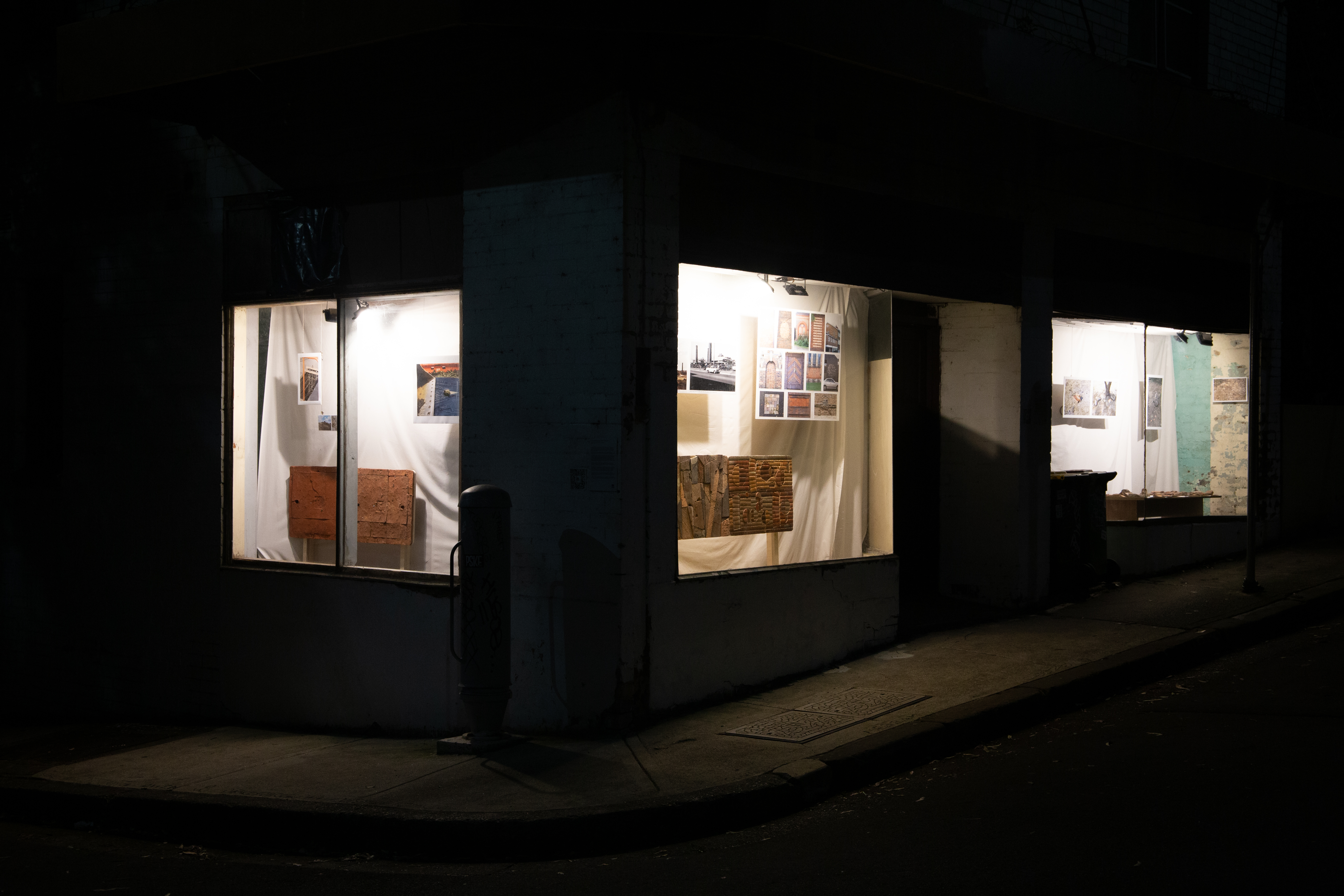
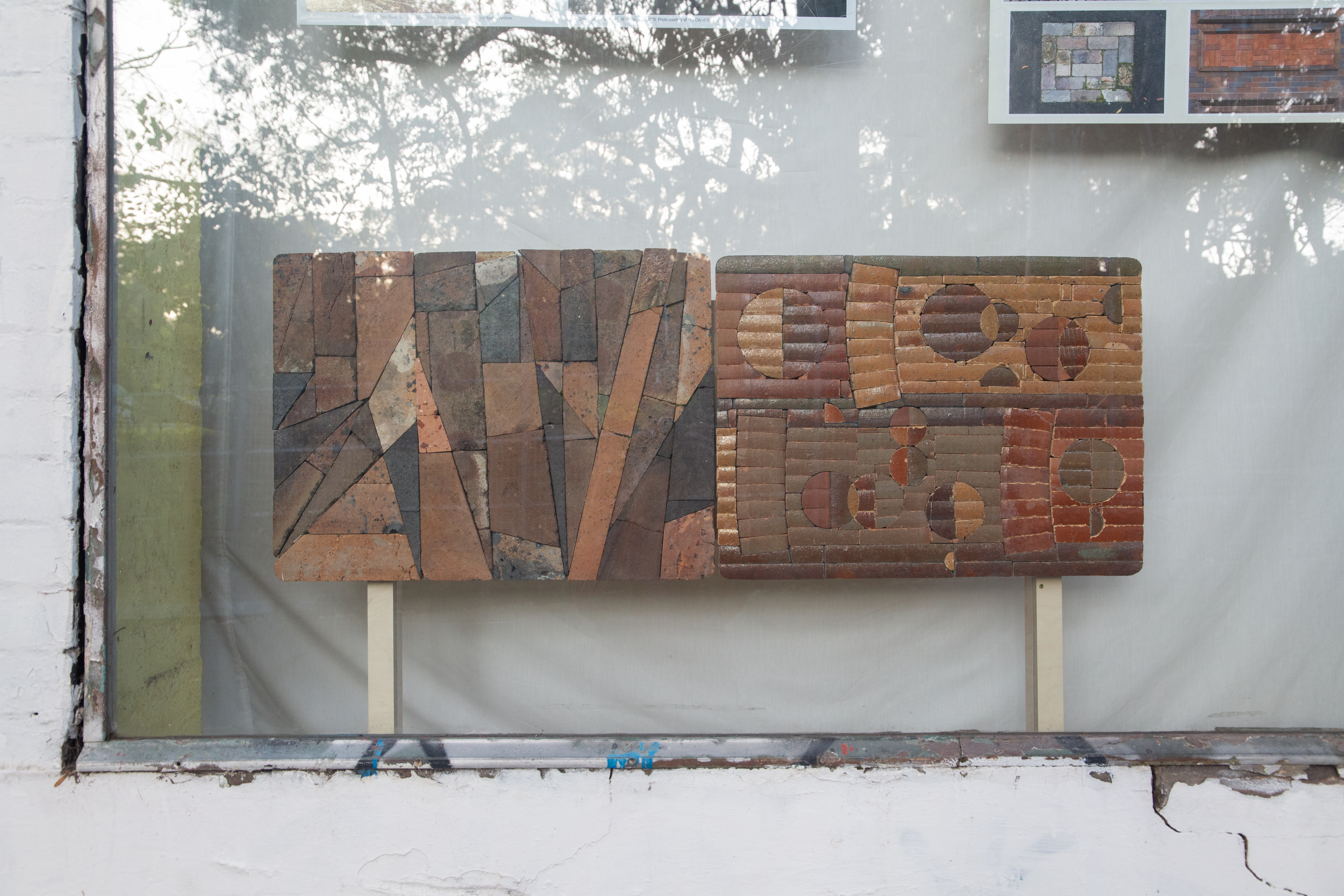
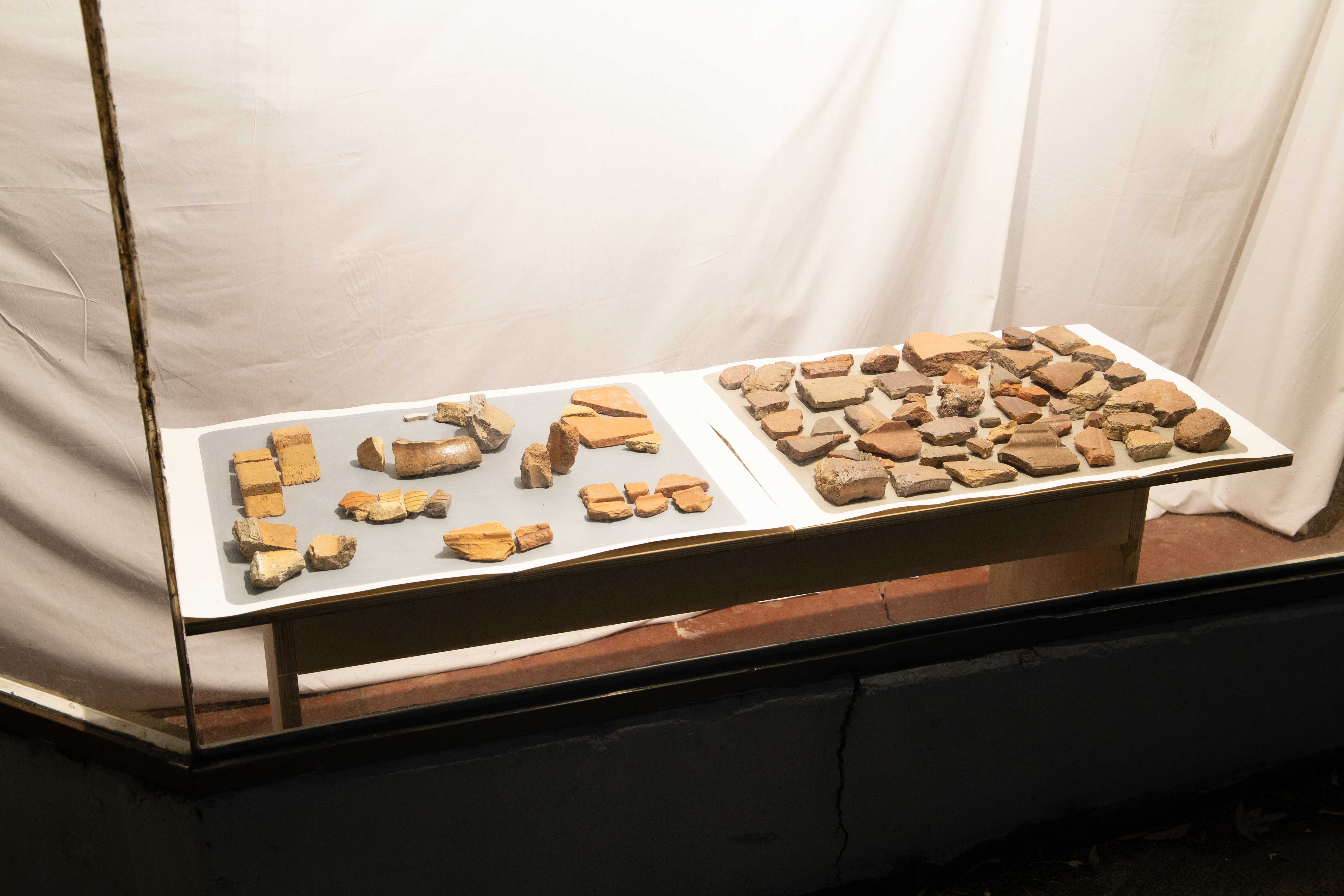
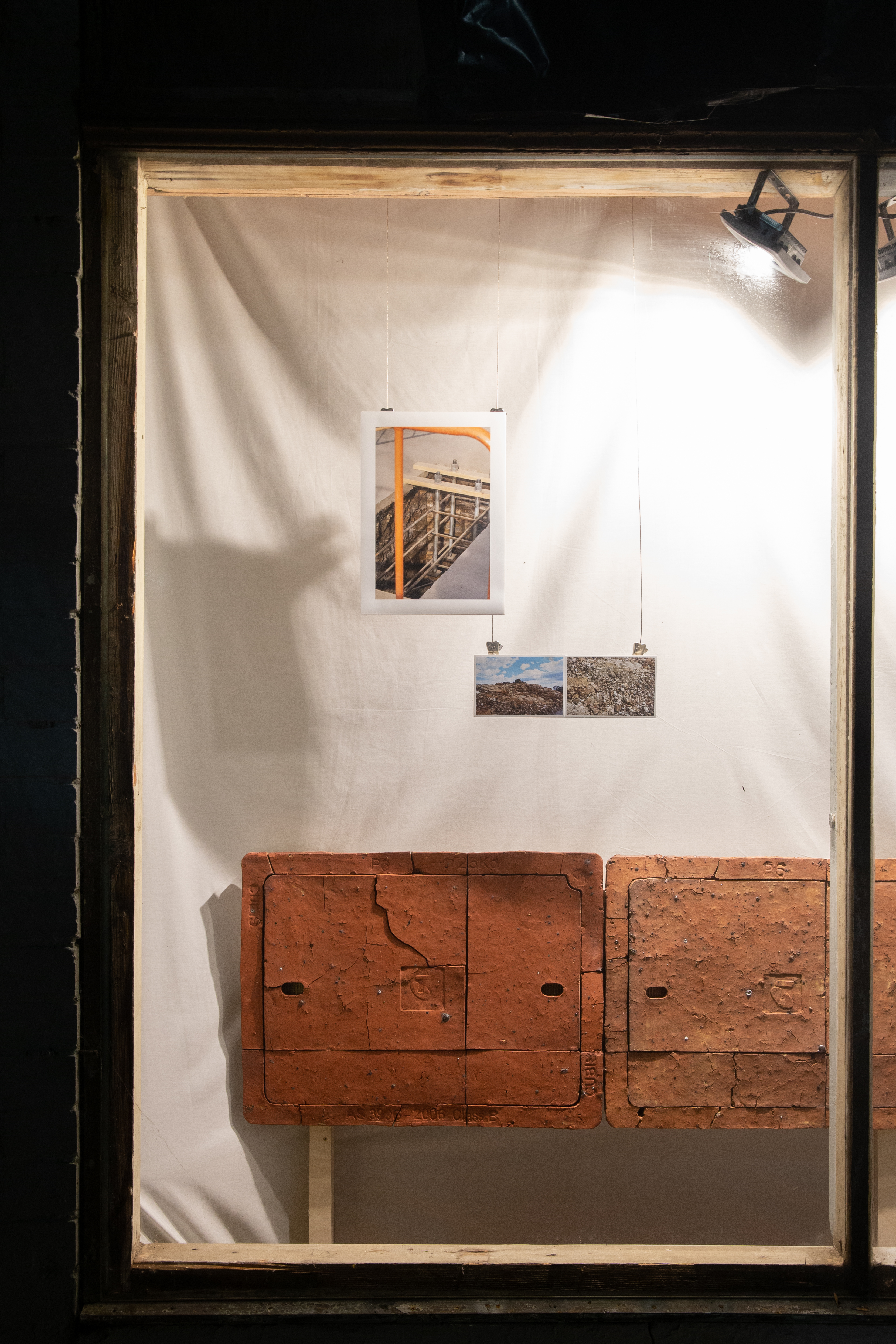
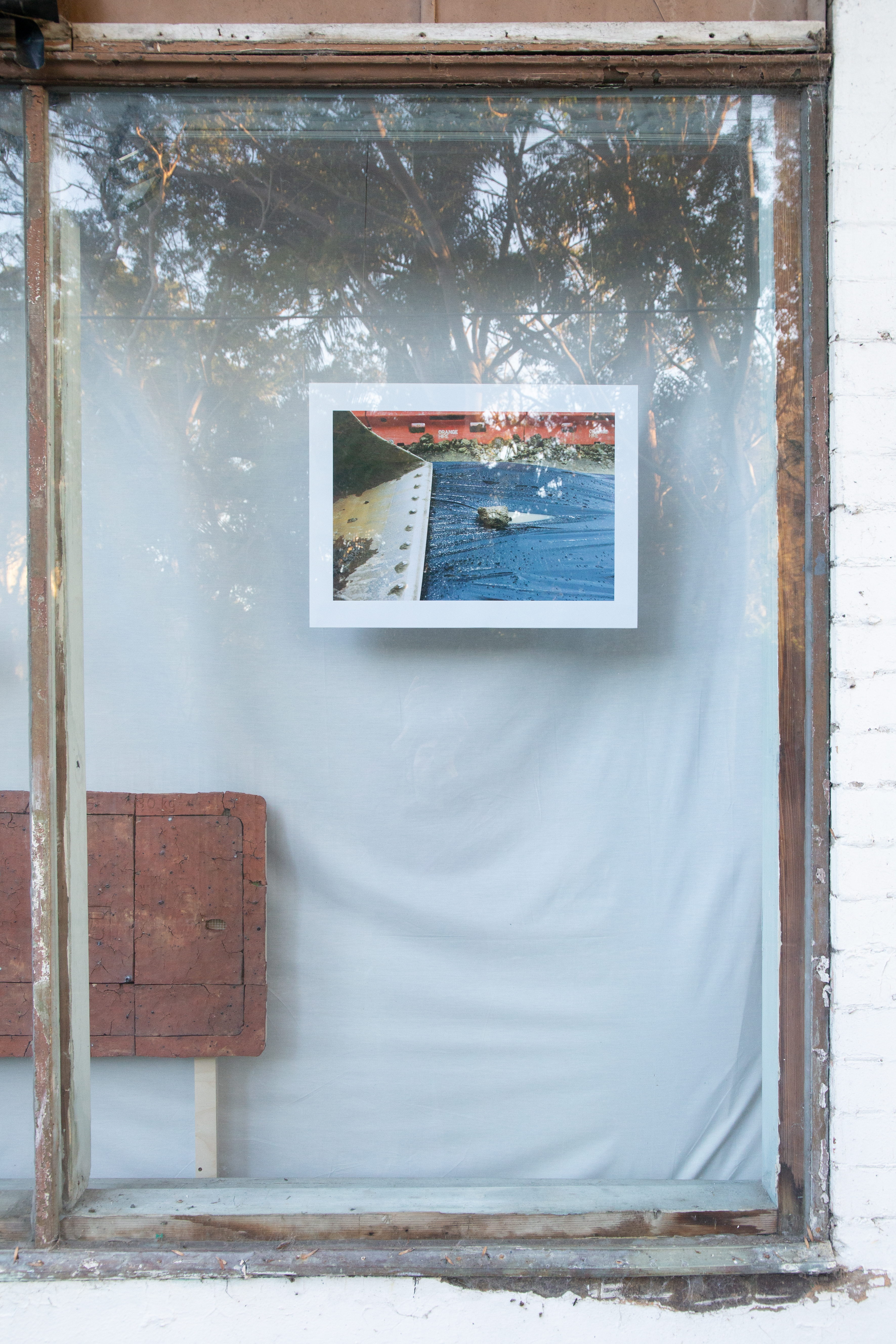
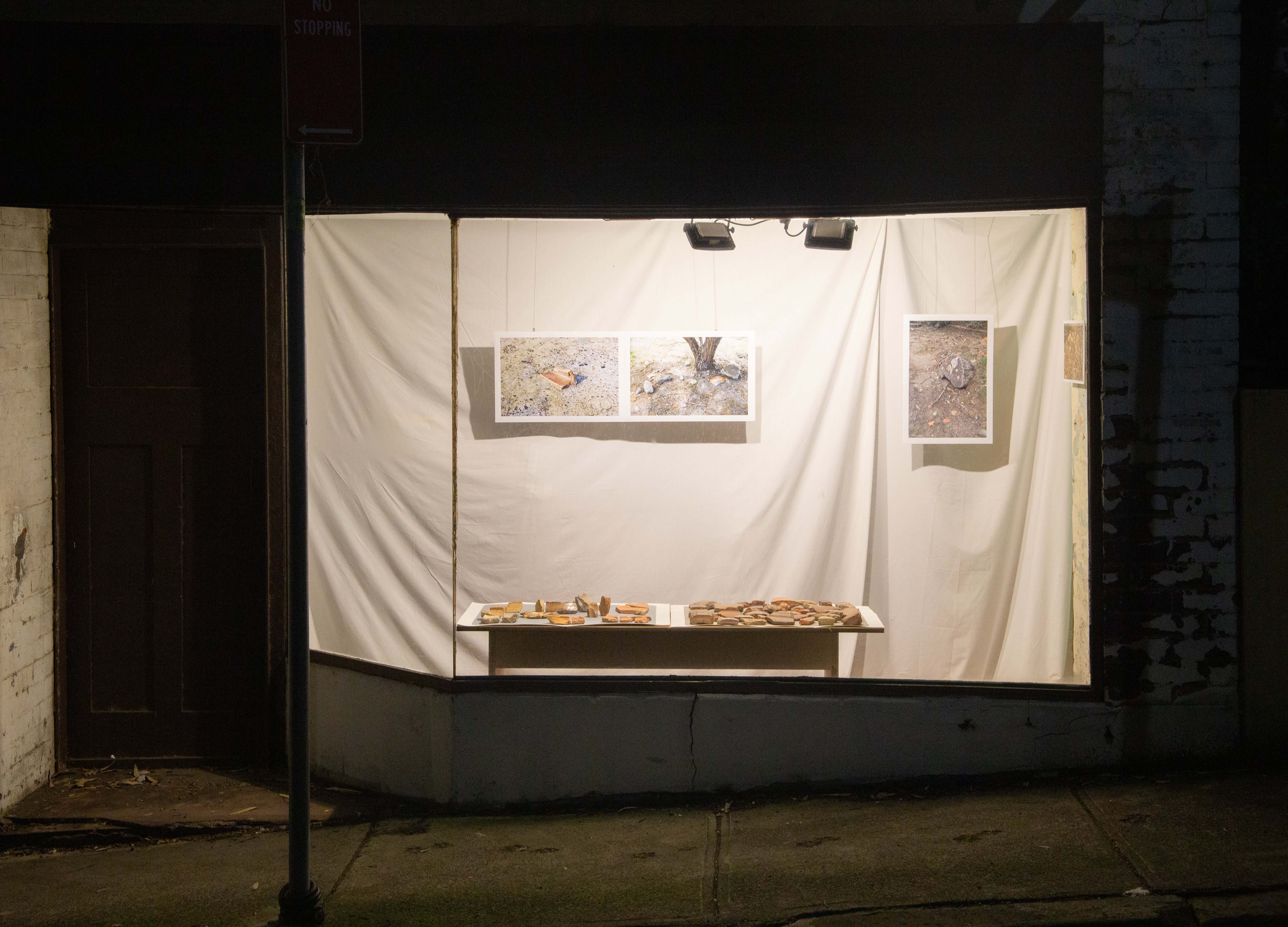
Soundtrack by Preface
Poster by Lois Morton-Chong
